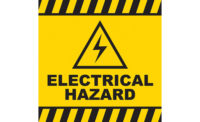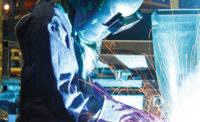FR clothing reduces flash fire harm

In the past few decades, there have been high-profile combustible dust incidents with substantial injuries and mortalities, leading OSHA to reissue the National Emphasis Program (NEP) in March 2008. The NEP aggressively inspects facilities and enforces existing regulations where frequent or catastrophic combustible dust events occur, employers must use a number of existing rules and consensus standards to mitigate combustible dust hazards. But because there is no formal rule, compliance is much lower than expected.
OSHA points to its General Duty Clause, 5a1, mandating employers provide a workplace where workers are protected against recognized hazards, as the means to achieve combustible dust compliance. For specifics, employers must pull from consensus standards, usually NFPA 652, to understand how to assess the dust hazard and determine if the dust is combustible. Using DHA (Dust Hazard Analysis), employers should use the results to mitigate the impending risks of dust by utilizing the hierarchy of controls.
Mitigation steps
Hazard mitigation can be accomplished through preventative methods such as:
- Engineering controls, to monitor and reroute pressure increases, to mitigate explosion impacts, and to suppress deflagration and combustion factors;
- Thorough cleaning and housekeeping procedures, to stop dust accumulation; and
- Ventilation installations, to lower the potential for pressure and heat build-up.
Employers should know that additional mitigation is needed to further shield employees. Employees are protected from combustible dust-related deflagrations through the use of appropriate flame resistant (FR) PPE along with ongoing training programs and procedural updates.
Flash fires are a serious threat to employee safety. Combustible dust is the fuel for flash fires, and often, flash fires are a more tangible and prevalent risk than deflagration and explosion.
PPE can help close the risk gap and mitigate the potential for injury or loss of life presented by flash fires. PPE, especially FR clothing, works to protect workers in two major ways – FR clothing will not continue to burn after a flash fire is over, and FR clothing provides sufficient insulation from second- and third-degree burns. When specified and worn correctly, FR clothing helps to provide escape time, so that employees can quickly and safely retreat from a hazard. While FR clothing will not prevent burns entirely, it can help drastically reduce the severity of burn injuries resulting from short-duration thermal exposure and significantly increase the probability of survival.
National Fire Protection Association’s (NFPA) Standard on Flame-Resistant Clothing for Protection of Industrial Personnel Against Short-Duration Thermal Exposures from Fire (NFPA 2112) provides the minimum performance requirements and test methods for FR fabrics and components, along with design and certification requirements for garments used in areas with short duration thermal exposures risks.
NFPA 652, another important standard governing PPE use in combustible dust environments, states employers “shall address PPE, including flame resistant garments” for operating and maintenance procedures as required by an appropriate workplace hazard assessment outlined in NFPA 2113.
Armed with these three NFPA standards, (NFPA 652, 2112 and 2113), and after completing a thorough PPE hazard assessment, employers can create and implement a PPE program best suited for employee protection.
Looking for a reprint of this article?
From high-res PDFs to custom plaques, order your copy today!




